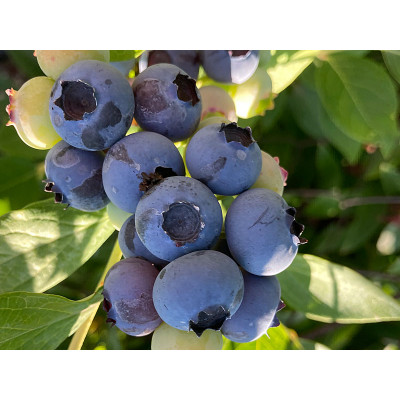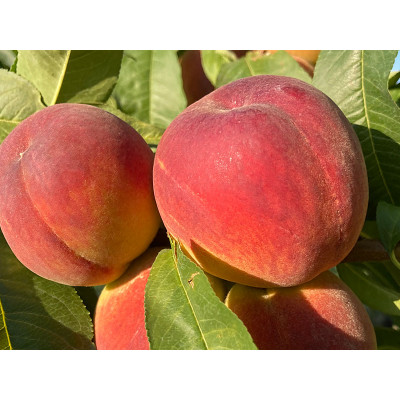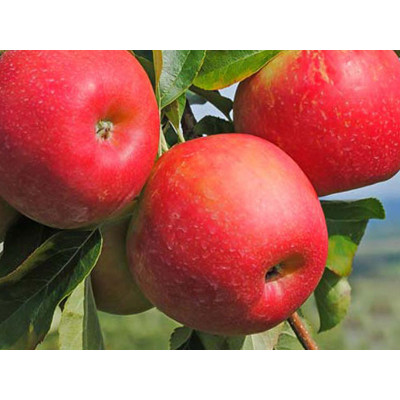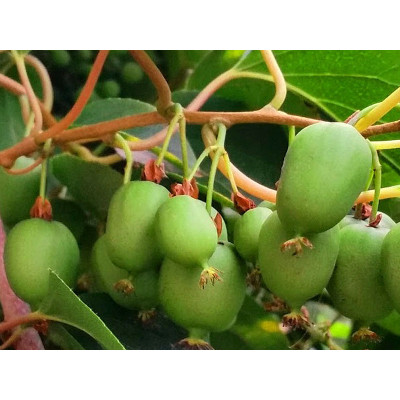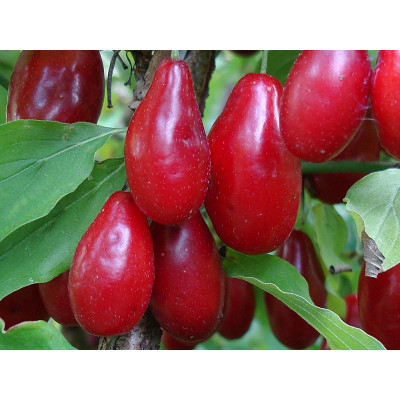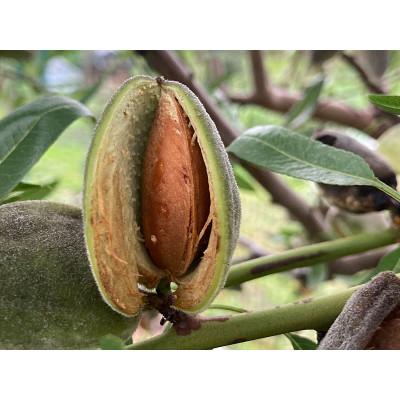LORA Table Grape Vine



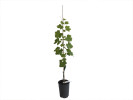
- The shipping price depends on the weight of the ordered goods (the more products, the cheaper the price)
- after you have placed the plants in the shopping cart, enter “calculate provisional shipping price” in the shopping cart, after entering the data the eshop will calculate the provisional shipping price for you.
Ask a Question About This Product
| Specifications | |
| Height at sale | 50cm |
| Pot | C2 |
| Rootstock | SO4 – one of the most reliable rootstocks, ideal especially for soils with higher calcium content, where it prevents leaf yellowing. It gives grafted varieties medium-strong growth, promotes early ripening and high grape quality. |
| Ripening time | beginning of August |
We send goods on Monday, Tuesday, Wednesday, by agreement also Thursday or Friday.
- Stock: In Stock
- Model: Vitis
The grapes of the Łora grape variety form large clusters with voluminous elongated berries. Productive table grape growers in particular will be delighted. It is a harmonious aromatic variety with a well-balanced taste of acid and sweet notes. The bunches can weigh between 800 grams and over 1 kilogram at the time of ripening, roughly in the first half of August. The clusters are conical or cylindrical. They can reach really interesting dimensions, which can be a source of pride for the grower. The individual berries are firm, juicy and crisp. Green, they may take on a subtle yellow tinge in the sun. It is advisable to pay attention to the grapes in spring. Picking through the weaker bunches will ensure that the weakening of the plant is alleviated. It may be overproductive, which may affect the vigour of the plant or the size of the ripe fruit. The Ukrainian cultivar Lora was developed from Muscat and Koroleva Tayrovskaya. The variety is foreign-pollinated, so it needs any other variety to pollinate.
The advantages of this cultivar are its hardiness, which is mostly reported to be in the vicinity of -20°C to -24°C, and also its resistance to common vine health problems. The variety is relatively resistant to grey rot and powdery mildew. Its yield and resistance are probably the key characteristics why the variety is popular with amateur growers as well as in commercial table grape production. A significant production of growers dedicated to the production of this grape variety can be found in Moldova.
The vine as plant and the grape as fruit
Tutifruti s.r.o. has a range of quality vine varieties in containers. This means that they can be planted throughout the entire growing season. It is important to ensure that the root ball in the container is intact when removing and transplanting. Growers do not have to worry about cutting the roots, the growth of the vines is not hindered or compromised by transplanting and the overall restart of the plant. With young plants, more care is taken with watering. Vines cannot be grown without support. In the gardens, therefore, supports, welded structures, concrete columns or temporary wooden solutions are created. The solution is also to attach them to walls and walls, where we avoid planting roots close to foundation walls or in an area marked by rubble and construction waste. Pergolas and tension wire are also suitable. Vines cannot be planted without support. Young plants require protection from frost. However, reinforced plants are already acquiring the resistance known for each species. Pruning during early spring is essential for the plant to bear fruit. The vines usually bear fruit during September, depending on the variety. Vines can be threatened by several diseases, the most common of which is mildew. Among the pests, it is the vine aphid. Resistant varieties are able to defend themselves naturally against diseases, or the incidence of possible diseases is minimal. Less resistant varieties can be treated with preventive products.
The vine is a plant of many varietal variations. Several cultures, phenomena, arts and several types of food and wine industry are based on it. It is a thermophilic plant, although for many species, thanks to their resistant properties and hardiness, it is possible to grow vines with good production even in the northern regions of Slovakia. The soil for vines should be nutritious, with the key elements for their cultivation - phosphorus, potassium, magnesium and calcium. Fertilisation is also possible with commercial fertilisers as well as many home-made organic solutions. The type of soil and the supply of these nutrients can to some extent influence the resulting taste of the grapes and wine. Having your own vines and growing your own fruit is a matter of growing passion, aesthetics, and necessity. Tasty fruit need not be the only reason for interest in the vine. In fact, it represents a living tool for design interventions in yards, gardens, parks, as well as places where the goal is to create a living pergola that adds shade on summer days. In such places outside the normal garden soil, we are even more concerned with soil nutrition and the impact of regular watering. The grapes have uses in juices, bourbons, or for home or professional wine, or for further processing. Table grapes will provide fresh tasty and fresh fruit for you and your loved ones, but overproduction will be used for further processing. For example, for drying, making jams, they can also be easily frozen, but folk recipes also know other ways of processing and neighbourly use of this fruit of refreshing taste.


